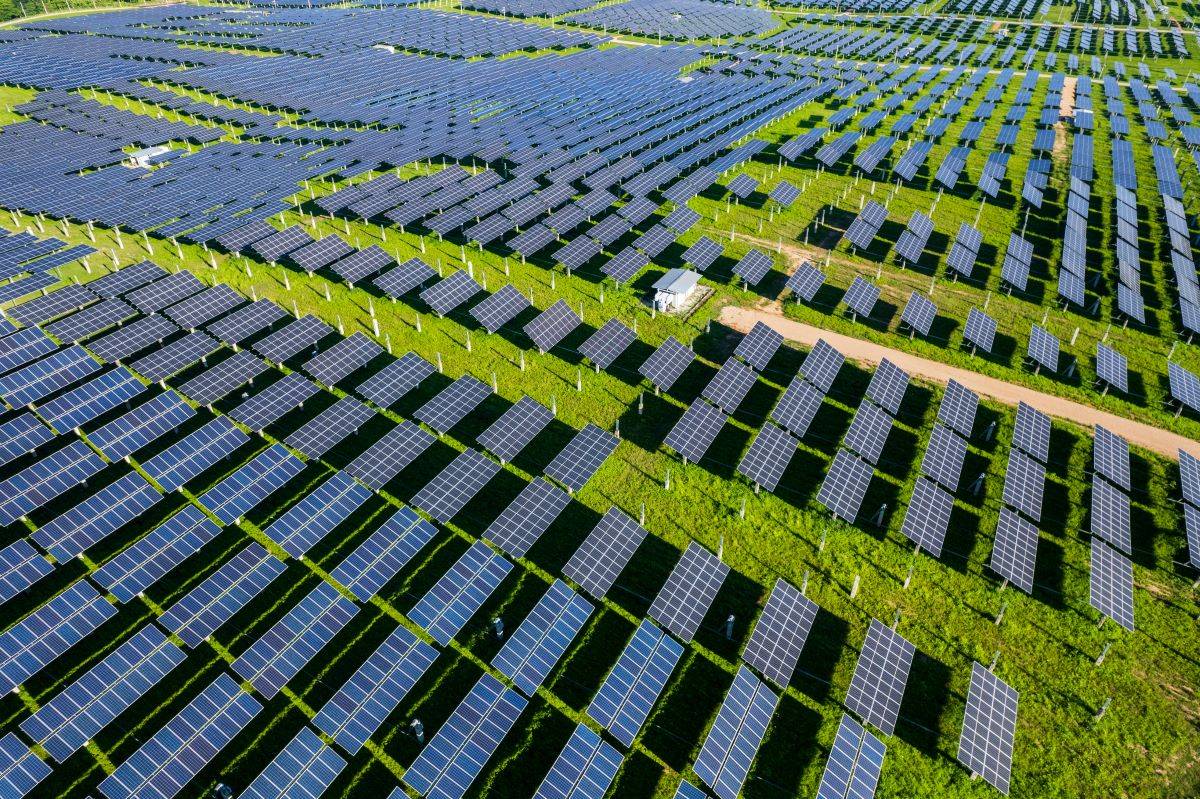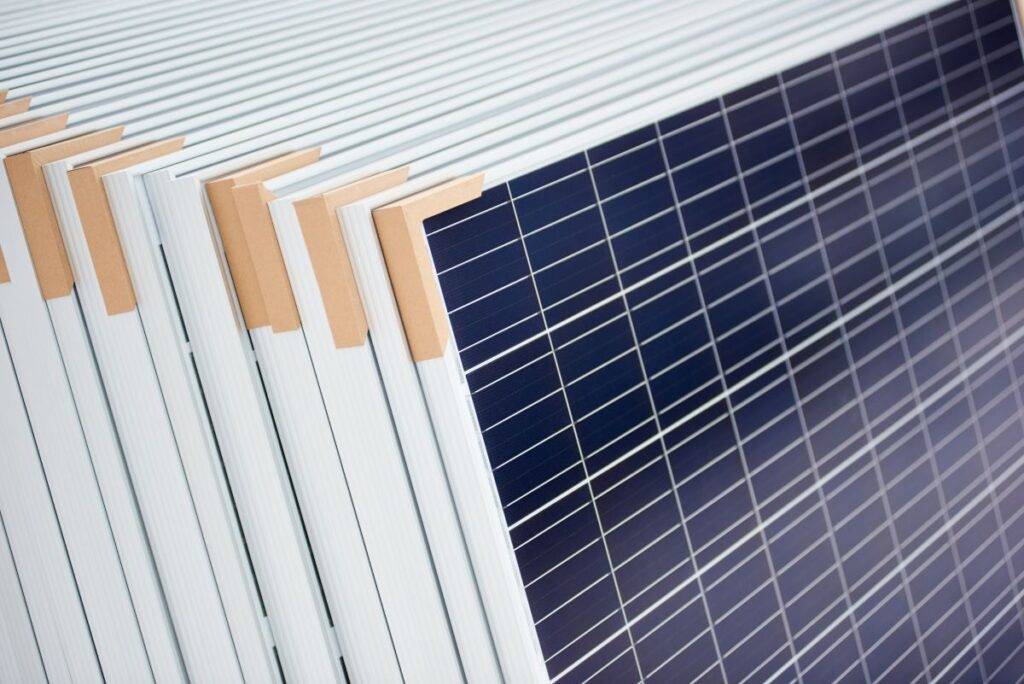What raw materials are needed for the production of photovoltaic panels?
 Raw materials for the production of photovoltaic panels
Raw materials for the production of photovoltaic panels
Energy from renewable sources, including the sun, is gaining many supporters in Poland. Solar installations allow you to become independent of energy supplies and reduce the harmful impact on the environment. It is worth knowing how photovoltaic panels are produced, as well as knowing their principle of operation. What raw materials are needed during production and how is solar radiation converted into almost free electricity? What influence does the solar panel, dimensions, location and other parameters have? Will a 1000 W photovoltaic panel or a standard module with half this power be better in a private house? Here is some useful information about renewable energy from the sun.
Modern silicon wafers
Most photovoltaic panels are made of silicon wafers. Silicon is a raw material that makes up about 30% of the earth’s crust. The element is mined in many places on earth, and its acquisition is currently not threatened. The production of panels takes place in many stages. In the first one, silicon should be produced, which will be suitable for the production of photovoltaic cells. A crystalline variety of silicon is used, i.e. quartzite, which is also used in other industries, e.g. in interior design of buildings.
Pure crystalline silicon
The material is heated in furnaces at a high temperature of 1500-2000 degrees Celsius. Silicon dioxide is combined with carbon and so-called metallurgical silicon is obtained. Its purity is 98-99%, but it cannot be directly used in electronic installations. It still needs to be cleaned, which is done by dissolving in hydrochloric acid with the addition of copper as a catalyst. The liquid is distilled and purified crystalline silicon is deposited on the surface of an electrically heated furnace.
The use of boron and phosphorus in the production of photovoltaic panels
Other elements needed for the production of photovoltaic panels are boron and phosphorus. Each panel is built of successively superimposed layers. Silicon in the form of cylinders is cut into thin discs or plates, which are then cut into rectangles or hexagons. Thanks to this, they can be adapted to the selected frame of the photovoltaic panel and create the maximum surface with which electricity will be generated. Boron and phosphorus are used in the treatment of silicon to produce a silicon layer with a positive and negative charge. Semiconductors are connected using small wires, which allows you to build paths in which current will flow.
Silicon layer positive and negative
The negative silicon layer contains electrons that can move freely, while the positive layer consists of free electron spaces, often called holes. When the two layers are combined, electrons begin to move from the negative layer to the positive layer, which creates an electric potential. When sunlight reaches the panel, it releases an electron and leaves a hole. The newly created places are filled with more electrons, and free electrons accumulate at the pole. In this way, the collected electrons flow through the conductor and electricity is generated.
Electrodes made of aluminium and silver
To maintain proper insulation, the edges of the wafer undergo a process called plasma etching. Reactive gases such as tetrafluoromethane gas and oxygen are then used, which act aggressively on the edge of the wafer and create a clean connection between the positive and negative layers. Upper and lower electrodes are applied to the cells. They should be made of materials with low electrical resistance and excellent mechanical properties. Therefore, aluminium and silver are often used for the lower and upper electrodes, respectively. These raw materials are applied by vapor deposition in a vacuum and by screen printing.

Glass or plastic coatings
The use of material and the method of processing has an obvious impact on the basic parameters of photovoltaic panels. Price and performance are the basic features that every customer pays attention to. It is worth noting that the cells are often covered with an anti-reflective substance, as well as a coating made of rubber or vinyl. Thanks to this, they do not reflect light, because their task is to capture solar radiation. Next, the photovoltaic panel is placed in a frame made of aluminium and covered with glass or a layer made of plastic. The whole set creates a ready-to-use photovoltaic panel that can be used by individual customers on their houses.
Efficient monocrystalline cells
Two types of photovoltaic cells are currently used. Monocrystalline and polycrystalline cells can be distinguished. The latter are cheaper to produce, while monocrystalline cells are more efficient. In addition, they are characterized by better aesthetics, which is important in the case of modern single-family housing, especially in the popular minimalist style. A good example is the 500 W boost photovoltaic panel, which is considered the industry standard and allows for an average power of about 300 W. Already a 500 W photovoltaic panel is an excellent solution for large-scale applications. Also worth mentioning is the 1000 W photovoltaic panel, which is a popular choice for home as well as commercial use.
Economic polycrystalline modules
Monocrystalline modules are manufactured from wafer-formed silicon as described above. In contrast, polycrystalline cells are made of many tiny pieces of silicon that are melted together. This has an impact on the characteristics of photovoltaic panels, and the price may be more attractive to the end user. In this way, manufacturers reduce costs, and at the same time can still obtain wafers that can be successfully used in photovoltaic panels. However, in each cell there are many crystals and electrons have less space to move. Therefore, these types of panels have a lower efficiency than monocrystalline cells.
Impact on panel efficiency and cost-effectiveness
It should be noted that the efficiency of the panels is largely determined not only by the incoming sunlight, but also by the quality of the materials and the way they are used. The photovoltaic panel, dimensions and its location are important. The type of raw material used to make the cells affects the way light is converted into electricity. The arrangement of the wires by which the photovoltaic cells are connected to each other affects the energy efficiency of the panel. The degree of reflection of the sun’s rays, the ability to absorb light on both sides of the panel and the resistance to performance degradation at high temperatures are also important. All these factors must be taken into account both during the production and installation of photovoltaic panels. Otherwise, the installation may not achieve the expected efficiency and return on investment.